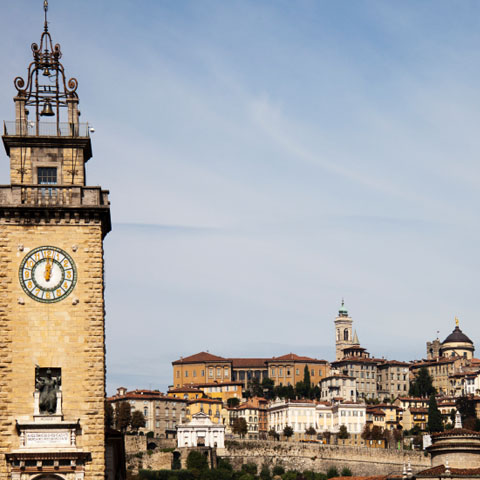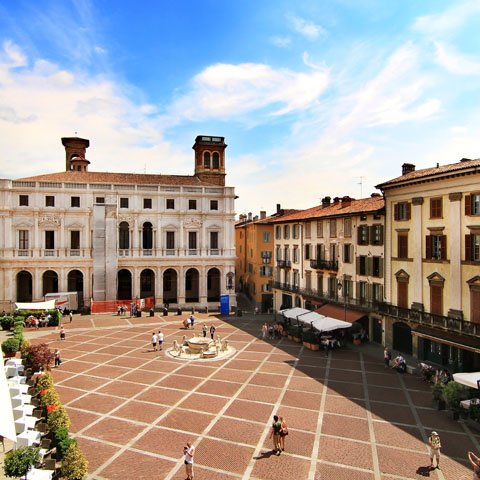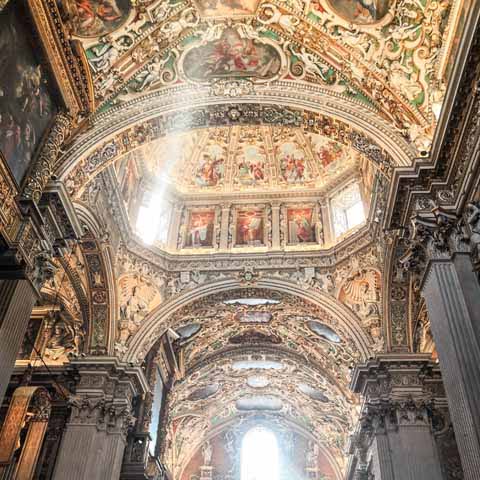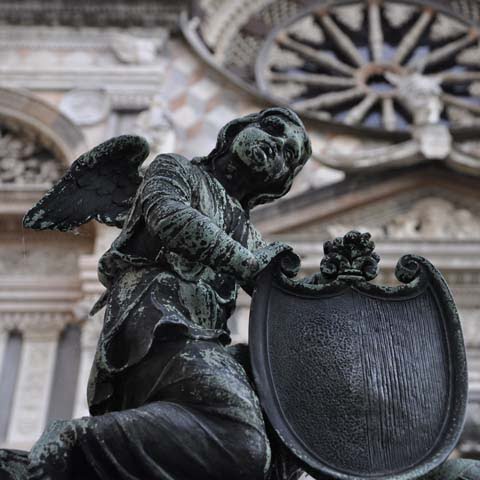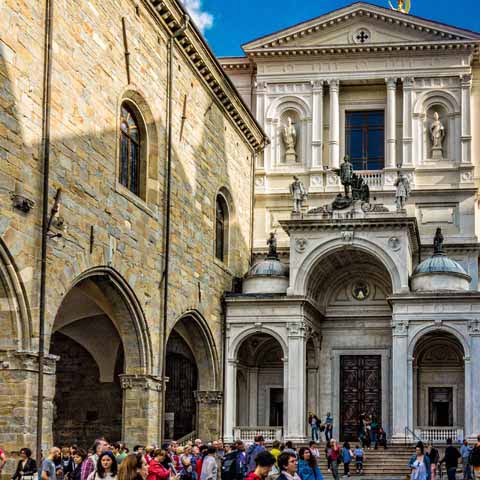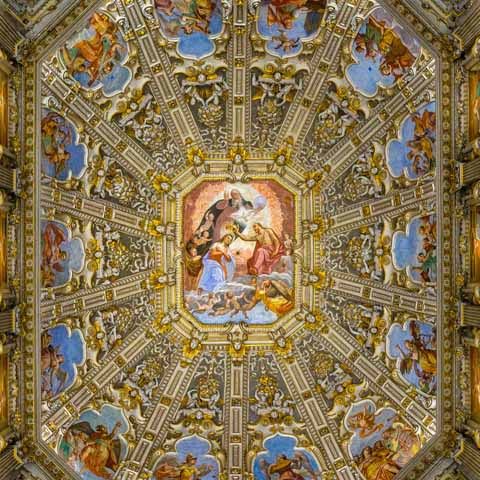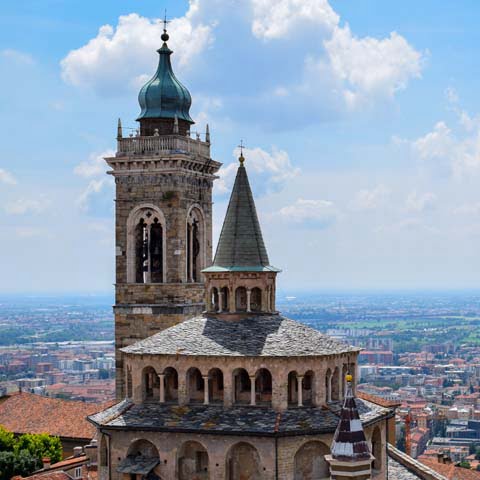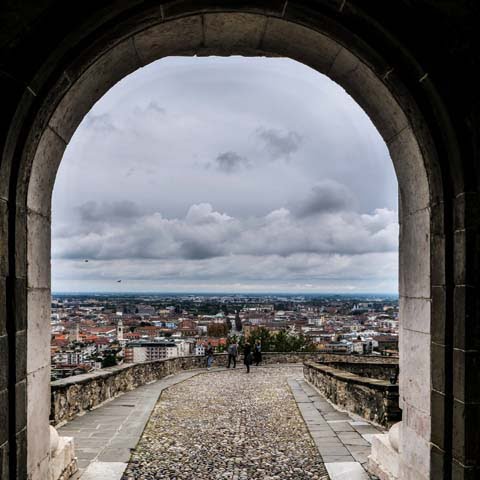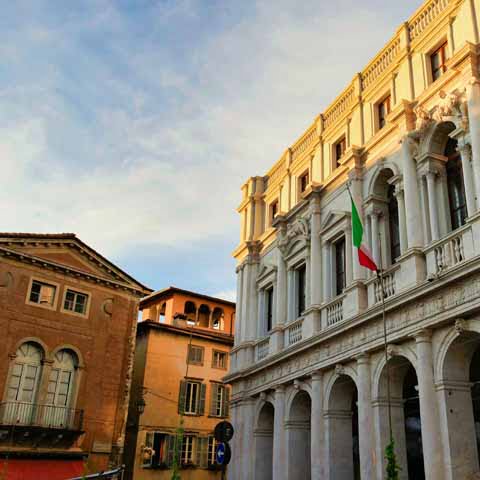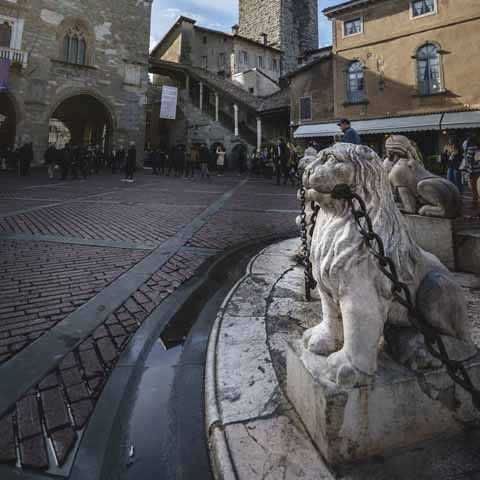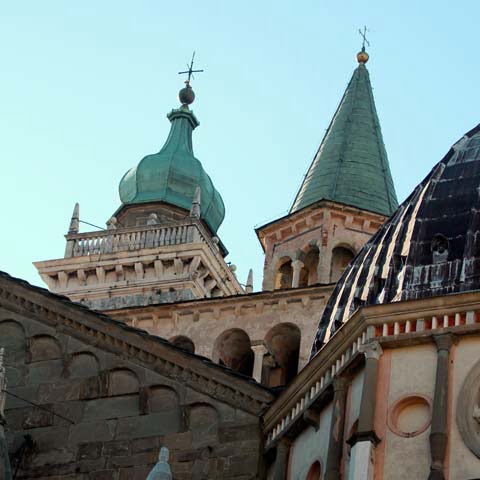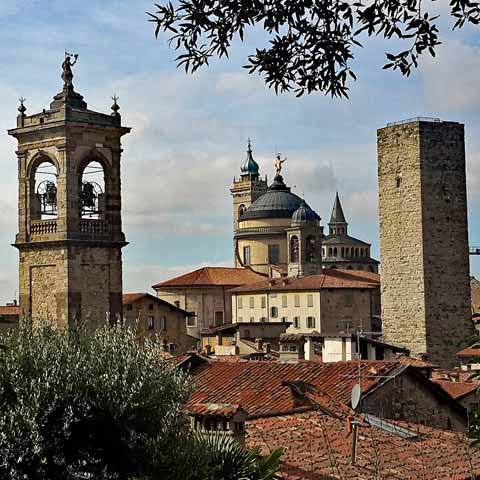Approximately 30 miles northeast from the world-renowned Northern Italian city of Milan, sits the popularly visited and gorgeous city of Bergamo. This city is tucked into surrounding hills that lie at the beginnings of the Bergamo Alps and offer a breathtaking backdrop for many magnificent sightseeing stops. Bergamo both charms and delights those who wander here with beautiful architecture, stunning landscapes, and a surprisingly luxurious small-town feel.
Located in the alpine Lombardy region of Italy, Bergamo is beloved by its more than one hundred thousand residents and steady stream of visitors alike. Despite its size, the city has an enchanting quintessential Italian vibe that seems to slow your pace and open your eyes to the beauty that abounds all around you.
This ancient city with roots tracing all the way back to 49 BC is divided into two unique sections: Città Alta which is the Upper Town and Città Bassa which is the Lower Town. Although both areas are part of the city of Bergamo, they differ in their composition.
Perhaps the most striking characteristic of Città Alta, other than the hill it sits perched upon, are the sixteenth century Venetian defensive walls that surround it. These defensive walls built by the Republic of Venice have been awarded the distinction of being a United Nations Educational Scientific and Cultural Organization (UNESCO) World Heritage Site. This older part of the city features narrow cobblestone streets and alleyways and attractive open-air squares. Much of the traffic in this part of the city is pedestrian. When visiting here, be sure to give yourself plenty of time to soak up the culture and beauty of this area as it is not to be rushed.
Città Bassa is far more modern in appearance than its counterpart, but is still filled with a sense of tradition the city is known for. This part of the city flourished greatly just after World War II and is now highly residential with an estimated twenty-five neighborhoods comprising it. The Lower Town features wide main roads very reminiscent of large cities that make traveling by vehicle quite easy.
Bergamo’s region of Lombardy is considered to be one of the most industrialized regions in the area and is responsible for producing an estimated quarter of the country’s gross domestic product. In general, the economy here centers on banking, industry, and retail.
With Bergamo’s region being such a hub for industry, it is no surprise that many of the programs offered by local educational institutions are geared toward that sector. The facility with what might be the largest educational presence in the city is the University of Bergamo, also known as UniBg. This public university is divided into eight departments including communications and philosophy, economics, law, accounting, foreign languages, engineering, finance, and social sciences. The university also offers post graduate courses to students and enjoys a close working relationship with many of the larger companies in the area. Other
Bergamo educational institutions include branches of the Mario Negri Institute for Pharmacological Research and Accademia Carrara which is an academy of fine arts and an art gallery.
Bergamo is also dotted with palaces and historic residences built during the sixteenth and seventeenth centuries by powerful and rich families as a sign of wealth and distinction. Notable examples include Baroque Palazzo Terzi and Neoclassical Palazzo Medolago Albani.
Sports are also a large part of Bergamo’s culture as evidenced by the presence of a first-class stadium by the name of Stadio Atleti Azzurri d’Italia which holds more than twenty thousand seats for spectators. The city’s football team goes by the name Atalanta, and their women’s volleyball team goes by the name of Zanetti Bergamo. Perhaps most unique to the area is the Bergamo Lions American football team, which won several Eurobowls and is considered to be one of the most successful teams in European Football League history.
Bergamo is easily reached by vehicles, airplanes, and railway. The A4 Motorway conveniently links the city to other Italian hotspots such as Milan, Turin, and Venice. If traveling to or from the area by air, Orio al Serio II Caravaggio International Airport, one of the top five busiest airports in all of Italy, and the Milan Linate Airport will be two of your best bets. The Bergamo Railway Station is also a means of transportation.
Transportation within the city limits is somewhat varied. Particularly in Città Alta, the traffic is primarily pedestrian. While there are roads and footpaths that connect Città Alta with Città Bassa, the most popular mode of transportation for getting to one part of the city from the other is the funicolare which is a cable car system of sorts. While Città Bassa still experiences a good deal of pedestrian traffic, the roadways are rather wide and easily accommodate vehicles of most sizes. The Bergamo Light Rail also makes several stops between Bergamo and Alzano, a town in the province of Bergamo.
GEOGRAPHY
The city of Bergamo is located centrally in Northern Italy. It is located roughly less than thirty miles away from the enormous thriving metropolis of Milan and for that reason is often associated with its neighbor.
Although they are both parts of Bergamo, the city is divided into two main areas, the Città Alta or Upper Town and Città Bassa or Lower Town. Città Bassa is generally flatter and more even whereas the surrounding areas including Città Alta are far hillier in nature. Many of these hills are simply the base of the Bergamo Alps that begin in the northern part of the city.
CLIMATE
The beautiful city of Bergamo in Northern Italy typically enjoys warm summers, cold winters, and somewhere in between for fall and spring. Many travelers visit during the summer months when they can generally enjoy summer temperatures that average a high in the low eighties Fahrenheit and a low in the lower sixties. The winter season is usually much colder with highs hovering around the forties and lows dipping several degrees under freezing. Both fall and spring generally fall somewhere in between with highs reaching the sixties on average.
Historically, July is often the warmest month in Bergamo and January is the coldest. While the summer months do typically bring warmer weather, they also bring rain with the months of May, June, July, and August generally experiencing the highest totals of rainfall.
ONLY IN BERGAMO
One of the defining features of Bergamo is the dichotomy of the two parts of the city. Bergamo offers the perfect blend of old-world architecture, open-air piazzas, and bell towers in Città Alta with simply stunning hilltop views of the city below. Città Bassa and its surrounding areas offer everything from more modern-day culture to medieval castles, vineyards, nearby tiny villages, and Lake Endine.
There is a unique beauty in having so many different types of things to see and do all located in one city that seems to combine the best of many worlds to create the lovely heart of the city of Bergamo.
With its rich history and unique culture, the town of Bergamo is an excellent addition to any vacation to Northern Italy. Discover the centuries-old charms of the Città Alta and the lively atmosphere of Città Bassa — you will not be disappointed.
Travel Guides
The Lombardy Region of Italy
The Cities of Lombardy, Italy
